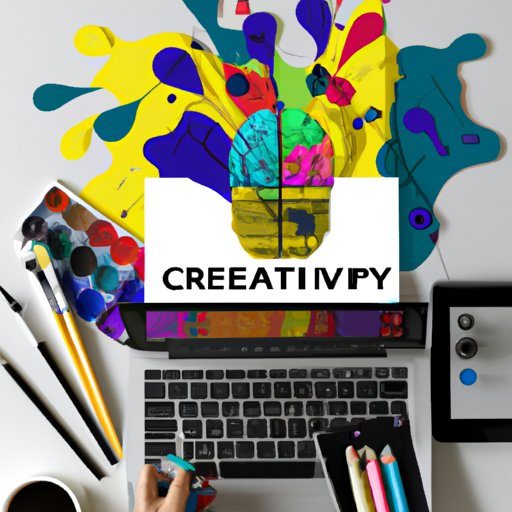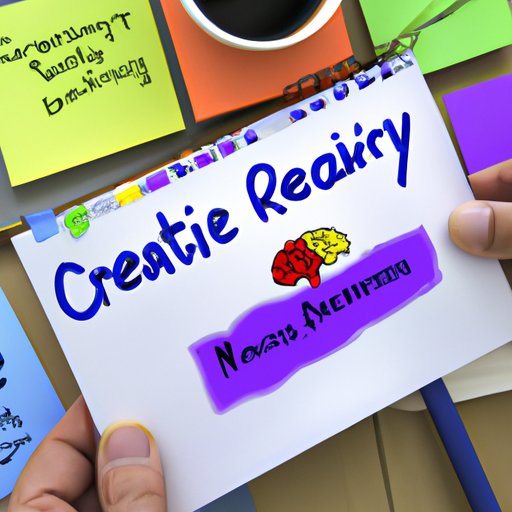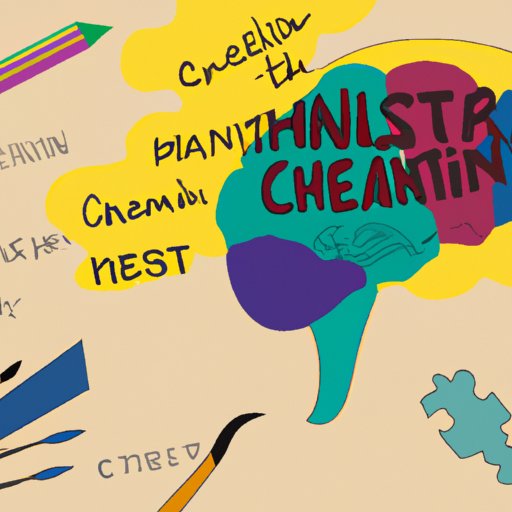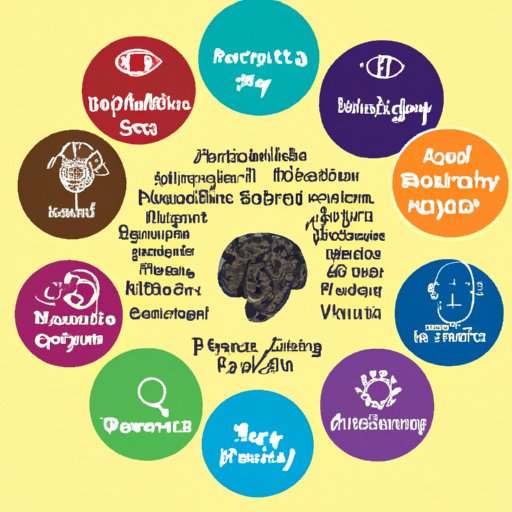Introduction
Creativity is often thought of as something innate or even magical; something that some people are born with and others are not. But what if creativity could be learned? In this article, we’ll explore the role of education, technology, mental health, and personality types in learning creativity.
Exploring the Role of Education in Developing Creativity
Formal education plays an important role in developing creativity. From a young age, children are taught to think critically and creatively, which lays the foundation for creative problem solving later in life. Formal education also provides students with access to new ideas and perspectives, which can help spark their own creative thinking.
In the classroom, teachers can foster creativity by encouraging students to think outside the box and come up with solutions to complex problems. This can involve activities such as brainstorming, role-playing, and group discussions. Teachers should also provide students with the tools and resources they need to explore their creative potential, such as access to art supplies, computers, and other materials.
Examining Creative Thinking Strategies
Creative thinking skills can be developed through practice and experimentation. There are several techniques that can help enhance creative thinking, such as brainstorming, mind mapping, lateral thinking, and reverse engineering. Brainstorming involves generating ideas by thinking of all possible solutions to a problem, while mind mapping involves creating a visual representation of ideas and concepts. Lateral thinking requires looking at a problem from different angles, and reverse engineering involves breaking down complex tasks into smaller, manageable steps.
It’s also important to look at examples of successful creative solutions. For example, Apple’s iPod was created by combining existing technologies (such as the hard drive and MP3 player) in a new and innovative way. By examining these types of creative solutions, we can gain insight into the creative process and develop our own creative strategies.

Investigating the Impact of Technology on Creativity
Technology has had a profound impact on creativity. On one hand, technology can provide us with new tools and platforms to express our creativity, such as video editing software and social media platforms. On the other hand, technology can also limit our creativity by providing us with pre-set parameters and limited options.
To make the most of technology, it’s important to use it as an aid rather than a crutch. For example, instead of relying on computer programs to create artwork, artists should use technology to enhance their creative process. For example, they could use digital brushes to add texture and detail to their work, or use virtual reality to explore new perspectives.
Analyzing the Benefits of Creative Problem-Solving
Creative problem solving can be incredibly beneficial in both personal and professional settings. By using creative problem solving techniques, we can come up with innovative solutions to complex problems. For example, engineers might use lateral thinking to design a better car engine, or entrepreneurs might use brainstorming to come up with a new business idea.
When using creative problem solving techniques, it’s important to break down the problem into smaller components and consider all possible solutions. It’s also helpful to take a step back and look at the problem from a different perspective. With practice and experimentation, it’s possible to develop effective creative problem solving strategies.

Researching the Neuroscience Behind Creative Thinking
Recent research in neuroscience has shed light on the mechanisms behind creative thinking. Studies have shown that creativity is linked to a part of the brain called the prefrontal cortex, which is responsible for higher-order thinking and decision-making. Other studies have found that creative thinking is associated with increased activity in the brain’s reward centers, suggesting that creativity can be rewarding and enjoyable.
Neuroscience can also inform creative strategies. For example, studies have shown that taking breaks can improve creativity, so it’s important to give your brain time to rest and recharge. Additionally, research suggests that engaging in activities unrelated to the task at hand can help spark creative ideas, so it’s beneficial to step away from the problem and do something else for a while.

Investigating the Link Between Mental Health and Creativity
Mental health has a significant impact on creativity. People who suffer from depression, anxiety, and other mental health issues often find it difficult to come up with creative solutions to problems. Conversely, people who are in good mental health tend to be more creative and open to new ideas.
To boost creativity, it’s important to take care of your mental health. This includes getting enough sleep, eating a balanced diet, exercising regularly, and engaging in activities that bring joy and satisfaction. Additionally, talking to a therapist can help identify any underlying mental health issues that may be preventing you from reaching your creative potential.
Examining the Role of Personality Types in Learning Creativity
Personality type can also influence how we learn creativity. Generally speaking, people who are introverted tend to be more comfortable with abstract and theoretical concepts, while people who are extroverted tend to be more practical and hands-on. Knowing your personality type can help you identify the best strategies for learning creativity.
For example, introverts might prefer to spend time alone exploring their creative ideas, while extroverts might benefit from attending group workshops or collaborating with others. Additionally, people who are highly organized might benefit from using structured techniques such as mind mapping and reverse engineering, while people who are more spontaneous might prefer to “wing it” and see where their ideas take them.
Conclusion
In conclusion, creativity can be learned through education, technology, mental health, and personality type. By understanding the neuroscience behind creative thinking, developing creative thinking strategies, and taking care of our mental health, we can enhance our creativity and come up with innovative solutions to complex problems. Ultimately, creativity is a skill that can be developed, and with practice and experimentation, anyone can become more creative.
(Note: Is this article not meeting your expectations? Do you have knowledge or insights to share? Unlock new opportunities and expand your reach by joining our authors team. Click Registration to join us and share your expertise with our readers.)
